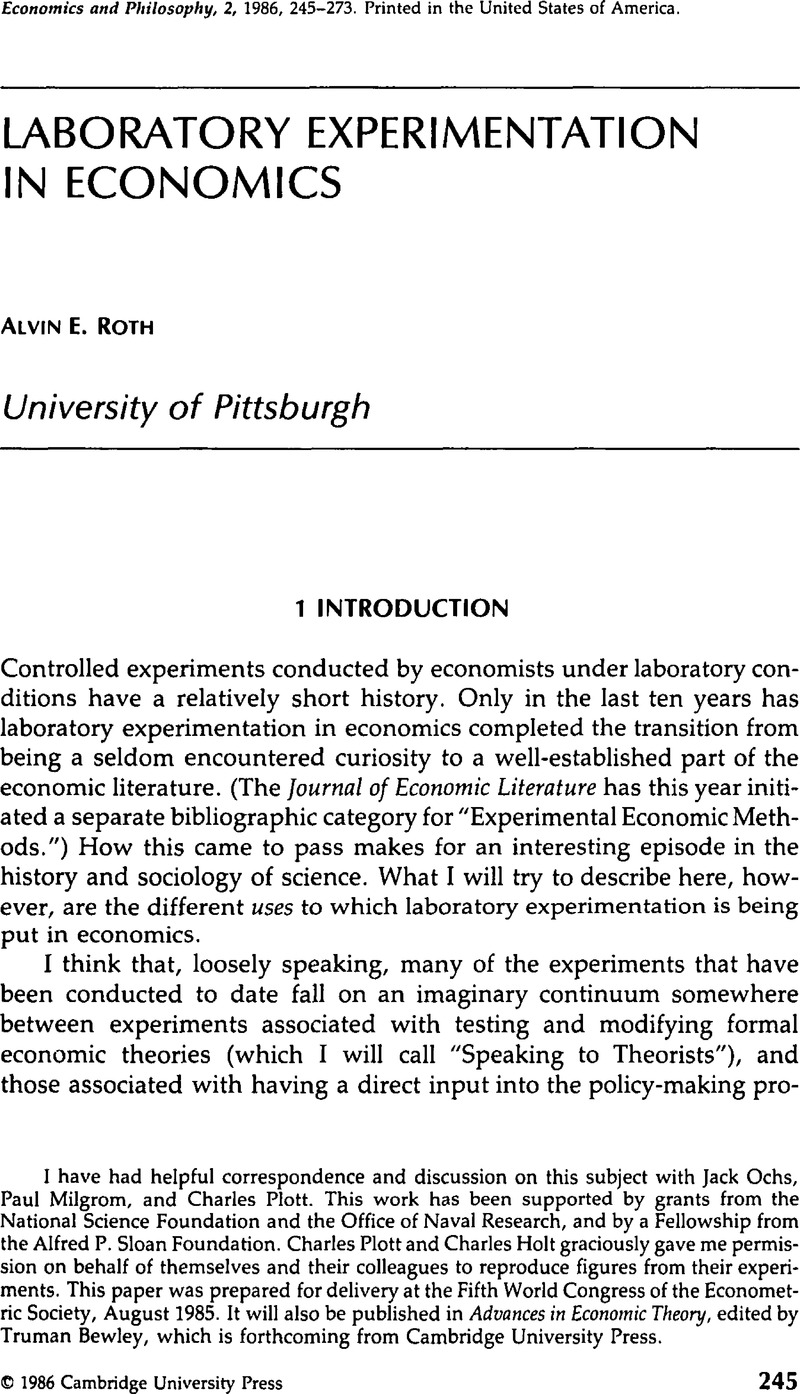Crossref Citations
This article has been cited by the following publications. This list is generated based on data provided by Crossref.
Butler, David J.
and
Hey, John D.
1987.
Experimental economics: An introduction.
Empirica,
Vol. 14,
Issue. 2,
p.
157.
Schmidt, Reinhard H.
and
Schor, Gabriel
1987.
Modelle in der Betriebswirtschaftslehre.
p.
9.
Berger, Lawrence A.
1989.
Economics and Hermeneutics.
Economics and Philosophy,
Vol. 5,
Issue. 2,
p.
209.
Rapoport, Amnon
1990.
Experimental Studies of Interactive Decisions.
Vol. 5,
Issue. ,
p.
119.
Weg, Eythan
Rapoport, Amnon
and
Felsenthal, Dan S
1990.
Two-person bargaining behavior in fixed discounting factors games with infinite horizon.
Games and Economic Behavior,
Vol. 2,
Issue. 1,
p.
76.
Rapoport, Amnon
Weg, Eythan
and
Felsenthal, Dan S.
1990.
Effects of fixed costs in two-person sequential bargaining.
Theory and Decision,
Vol. 28,
Issue. 1,
p.
47.
BERG, JOYCE
COURSEY, DON
and
DICKHAUT, JOHN
1990.
Experimental methods in accounting: A discussion of recurring issues*.
Contemporary Accounting Research,
Vol. 6,
Issue. 2,
p.
825.
Weg, Eythan
and
Zwick, Rami
1991.
On the rebustness of perfect equilibrium in fixed cost sequential bargaining under an isomorphic transformation.
Economics Letters,
Vol. 36,
Issue. 1,
p.
21.
Marchi, Neil
1992.
Post-Popperian Methodology of Economics: Recovering Practice.
Vol. 27,
Issue. ,
p.
113.
Hey, John D.
1992.
Recent Developments in the Theory of Industrial Organization.
p.
58.
Ochs, Jack
1996.
Experimental economics.
Journal of Economic Behavior & Organization,
Vol. 30,
Issue. 3,
p.
411.
Montet, Christian
and
Serra, Daniel
2003.
Game Theory and Economics.
p.
385.
Gonzalez, Wenceslao J.
2004.
Observation and Experiment in the Natural and Social Sciences.
Vol. 237,
Issue. ,
p.
71.
Guala, Francesco
and
Mittone, Luigi
2005.
Experiments in economics: External validity and the robustness of phenomena.
Journal of Economic Methodology,
Vol. 12,
Issue. 4,
p.
495.
Guala, Francesco
2005.
The Methodology of Experimental Economics.
Gonzalez, Wenceslao J.
2007.
General Philosophy of Science.
p.
275.
2007.
The Philosophy of Economics.
p.
143.
Hands, D. Wade
2007.
The Philosophy of Economics.
p.
188.
Duke, Charlotte
and
Gangadharan, Lata
2008.
Salinity in water markets: An experimental investigation of the Sunraysia Salinity Levy in Australia.
Ecological Economics,
Vol. 68,
Issue. 1-2,
p.
486.
Lee, Kyu Sang
2011.
Three ways of linking laboratory endeavours to the realm of policies.
The European Journal of the History of Economic Thought,
Vol. 18,
Issue. 5,
p.
755.



